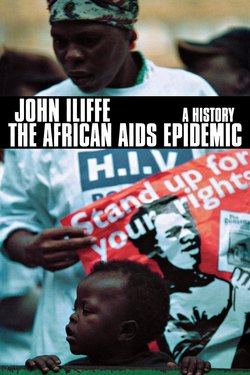Читать книгу The African AIDS Epidemic - John Iliffe - Страница 9
На сайте Литреса книга снята с продажи.
Оглавление1
Intentions
This book has a modest purpose. Many history students interested in Africa wish to study the HIV/Aids epidemic but are hampered by the lack of an introduction to the detailed literature. This book is intended as an introduction, for students and other readers.
The book is not a work of research. A thorough history of the epidemic during its first thirty years would demand fieldwork in affected communities, interviews with those involved, and study of unpublished records of international organisations, national governments, and private individuals. I have not attempted any of these, nor have I the necessary medical and anthropological skills. Instead, the book is a synthesis of the more important and accessible published material, put into a historical form.
A historical account offers four advantages. First, it suggests an answer to the question posed most provocatively by President Mbeki of South Africa: why has Africa had a uniquely terrible HIV/Aids epidemic?1 Mbeki attributed this to poverty and exploitation. Some earlier analysts suggested that Africa had a distinctive sexual system.2 This book, by contrast, stresses historical sequence: that Africa had the worst epidemic because it had the first epidemic established in the general population before anyone knew the disease existed. Other factors contributed, including poverty and gender relationships, but the fundamental answer to Mbeki’s question was time. Like industrial revolutions or nationalist movements, Aids epidemics make sense only as a sequence.
Second, a historical approach highlights the evolution and role of the virus. Because HIV evolves with extraordinary speed and complexity, and because that evolution has taken place under the eyes of modern medical science, it is possible to write a history of the virus itself in a way that is probably unique among human epidemic diseases. At the same time, the distinctive character of the virus – mildly infectious, slow-acting, ineradicable, fatal – has shaped both the disease and human responses to it.
Third, many aspects of the epidemic come into focus only when seen in the longer context of African history. Although HIV/Aids was profoundly different from earlier African epidemics, it arose from the human penetration of the natural ecosystem that is the most continuous theme of the African past. That the virus created a continental epidemic, however, was a consequence of Africa’s massive demographic growth, urbanisation, and social change during the later twentieth century. Everywhere the epidemic took its shape from the structure of the commercial economy that had grown up during the colonial period. Human responses, in turn, became part of an ongoing interaction between inherited moral understandings of disease and the medical explanations propounded by international authorities and modern African doctors. Like all great epidemics, HIV/Aids became a catalyst of change, but in directions already set by longer historical processes.
Finally, the African epidemic has itself changed over time. It is still at an early stage: ‘the end of the beginning’, as the head of the UNAIDS organisation described it in 2001.3 Yet in much of Africa the epidemic has already evolved from explosive expansion to maturity, while human responses have graduated from unwitting vulnerability to planned containment. In the process, many Africans have displayed the endurance common throughout their history. Their experience has taught the world much of what it knows about HIV/Aids. It is time to give that experience a historical shape.
